Maintaining a swimming pool involves regular care and occasional repairs. Pool owners often face the challenge of dealing with leaks or cracks affecting the pool’s integrity and functionality.
Traditionally, repairing a pool would involve draining the water and patching the damaged areas above the waterline. However, advancements in pool repair techniques have led to the possibility of patching a pool underwater.
Let’s explore whether it is possible to patch a pool underwater and discuss the techniques involved.

Patching Pools Underwater: Feasible or Not?
The answer is yes. It is possible to patch a pool underwater. With advancements in pool repair technology, professionals have developed techniques that allow repairs to be carried out without draining the entire pool.
Underwater pool patching is a convenient and efficient method for fixing leaks and cracks.
What is Pool Patching?
Before delving into underwater pool patching, it’s essential to understand the concept of pool patching itself. Pool patching refers to repairing any damage in the pool’s structure, such as leaks or cracks. It ensures the pool remains watertight and safe for use.
What Are the Traditional Pool Patching Methods?
Draining the Pool
Traditionally, pool repairs involved draining the water from the pool to gain access to the damaged areas. This method allows for a thorough inspection and repair, but it can be time-consuming and inconvenient for pool owners. Additionally, draining a pool requires proper equipment and expertise.
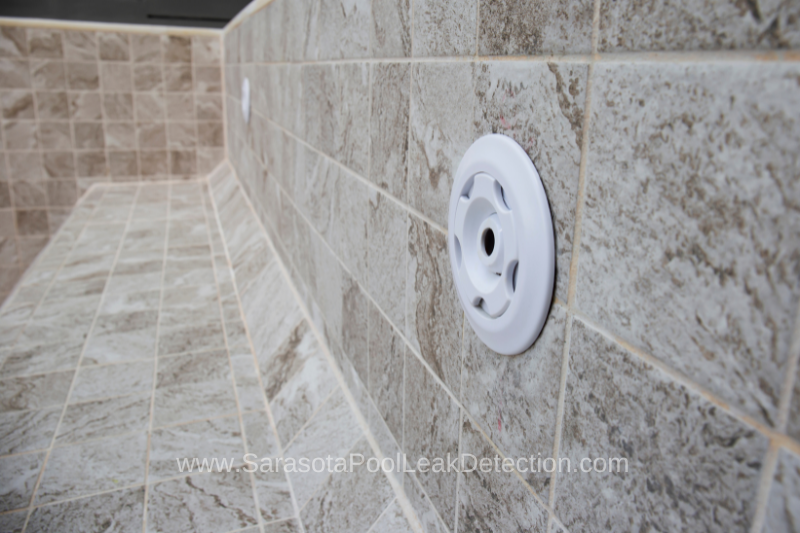
Patching Above Water
Another conventional method is patching the pool above water. This approach lowers the water level to expose the damaged section, and the repairs are conducted using various materials and techniques.
While this method eliminates the need for complete drainage, it still requires lowering the water level significantly.
Are There Any Underwater Pool Patching Techniques?
Yes, a few techniques can be used for underwater pool patching.
Hydraulic Cement Patching
Hydraulic cement is a popular material used for underwater pool patching. It sets quickly and can adhere well to damp surfaces. Professionals can use hydraulic cement to fill cracks and seal leaks while the pool remains water-filled.
Epoxy Patching
Epoxy is another effective material for underwater pool patching. It is a two-part adhesive that can bond well with various pool surfaces. Epoxy patching involves mixing the epoxy resin and hardener, applying it to the damaged area.
Polyurethane Foam Patching
Polyurethane foam is a versatile material commonly used in underwater pool patching. It expands upon contact with water, effectively filling in cracks and gaps. Polyurethane foam patching provides a reliable seal and can adapt to the movement of the pool structure.
Vinyl Patching
Vinyl patches are specifically designed for repairing vinyl-lined pools underwater. These patches adhere well to the vinyl surface and create a watertight seal. Vinyl patching is ideal for small vinyl pool punctures or tears.

What Are the Benefits and Limitations of Underwater Pool Patching?
Benefits of Underwater Pool Patching:
Convenience
Patching a pool underwater eliminates the need to drain the pool, saving time and effort. It allows for immediate repairs without disrupting pool usage or requiring the pool to be refilled.
Cost-effective
Underwater patching can be more cost-effective than draining and refilling the pool. It eliminates the expenses associated with water disposal and refilling and the labor involved in draining and refilling.
Limitations of Underwater Pool Patching:
Visibility and Accuracy
Working underwater can limit visibility, making it challenging to accurately locate and assess the damage’s extent. This can result in less precise repairs and potentially overlooking underlying issues.
Surface Preparation
Proper surface preparation is crucial for effective patching. Underwater conditions make it difficult to clean and dry the damaged area thoroughly, potentially compromising the adhesion and longevity of the patch.
Adhesion and Durability
Achieving strong adhesion underwater is challenging due to the presence of water and potential debris. This can affect the durability and longevity of the patch, leading to potential leaks or the need for subsequent repairs.
Safety Concerns
Underwater repairs introduce additional safety risks. Without proper training, equipment, and precautions, there is an increased risk of underwater accidents or injury.
While underwater pool patching can provide convenience in certain situations, it is crucial to consider its limitations. For more critical or extensive repairs, it is generally recommended to drain the pool and conduct repairs in a controlled and dry environment for better results and long-term durability.
Preventing Pool Leaks in the Future
A well-maintained and leak-free pool is essential for an enjoyable swimming experience. To help you avoid the hassle and expense of dealing with pool leaks, it’s crucial to implement proactive measures and follow proper maintenance practices. Here are some key topics to consider:
Regular Pool Maintenance and Inspection
Regular maintenance and inspections play a vital role in preventing pool leaks. Make sure to:
- Monitor water levels: Monitor your pool’s water level regularly. The water level may have significantly dropped, which could be a symptom of a possible leak.
- Check equipment and plumbing: Inspect all pool equipment, including pumps, filters, and plumbing connections, for signs of leaks or deterioration. Look for wet spots, rust, or any other indications of water leakage.
- Maintain proper chemical balance: Imbalanced pool chemistry can cause corrosion, leaks, and damage to pool surfaces and equipment. Regularly test and balance your pool’s pH, alkalinity, and chlorine levels.
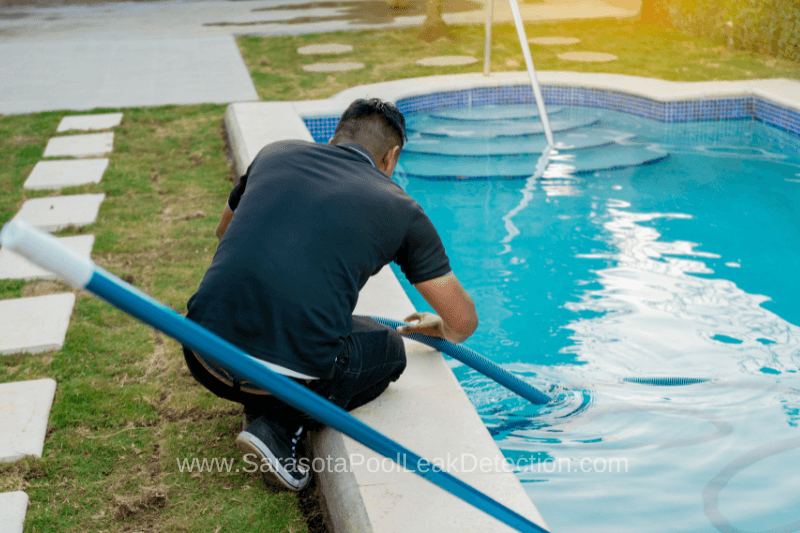
Proactive Measures to Prevent Leaks
Taking proactive steps to prevent pool leaks can save you from potential headaches. Consider the following:
- Landscape considerations: Be mindful of the landscape surrounding your pool. For example, tree roots can exert pressure on underground plumbing, leading to leaks. Avoid planting trees with aggressive root systems near the pool area.
- Proper pool cover usage: When not in use, cover your pool with a high-quality pool cover. This helps prevent debris accumulation, reduces evaporation, and minimizes the strain on the pool’s structure.
- Mindful pool use: Encourage pool users to avoid rough play, excessive splashing, or using sharp objects that could damage the pool’s surface or liner.
Please include attribution to https://sarasotapoolleakdetection.com with this graphic.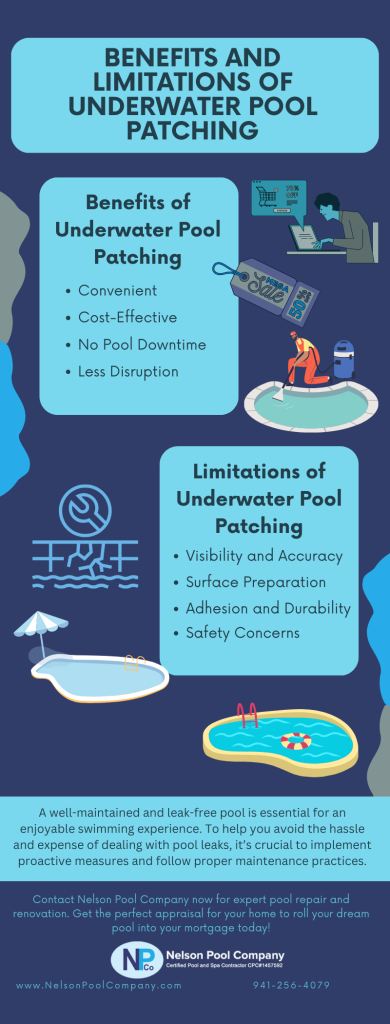
Tips For Maintaining a Leak-Free Pool
Implementing these practices can contribute to a leak-free pool:
- Regularly clean and skim the pool to remove debris that can cause damage or clog drains and filters.
- Promptly repair cracks or damage to the pool’s surface or liner using appropriate materials and techniques.
- Be cautious when performing any DIY repairs. It’s often best to consult a professional pool repair service for expert advice and assistance.
By following these guidelines for regular maintenance, taking proactive measures, and being mindful of pool usage, you can significantly reduce the risk of pool leaks and enjoy a trouble-free swimming experience.
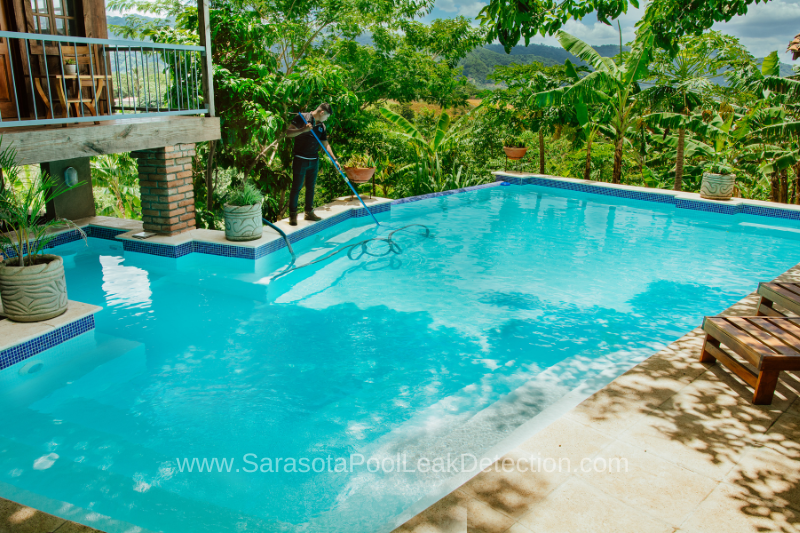
Should You Hire a Professional for Underwater Pool Patching?
Underwater pool patching requires expertise and specialized equipment. Hiring a professional pool repair company with experience in underwater repairs is advisable. Professionals understand the intricacies of pool structures and can identify the most suitable patching technique for each situation. Hiring a professional ensures a proper and long-lasting repair.
Underwater pool patching is a viable solution for repairing leaks and cracks without draining the pool. Advancements in materials and techniques have made it possible to achieve effective repairs underwater.
However, it is essential to consider the extent of the damage and consult a professional for complex repairs. Hiring a skilled pool repair company ensures the best results and maintains the integrity of the pool.
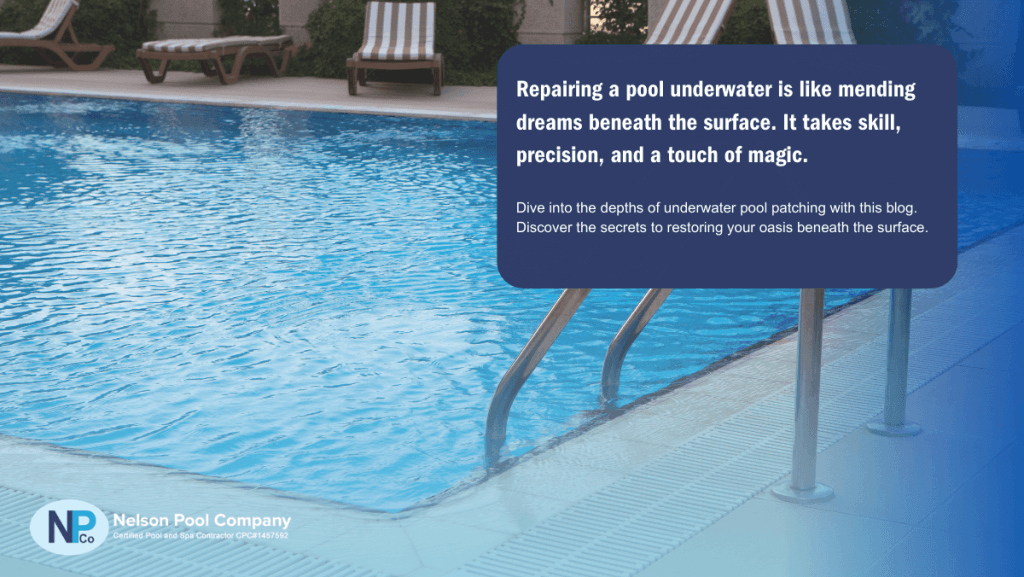
If your pool needs repairs or renovations, it’s crucial to seek the assistance of professionals who can ensure a thorough assessment and expert solutions. To schedule a pool repair and renovation company in your area to evaluate your pool and provide a bid on the necessary repairs, call (561) 570-1269 now.
Don’t delay in addressing your pool repair needs. Contact us today and take the first step towards restoring the beauty and functionality of your pool.
